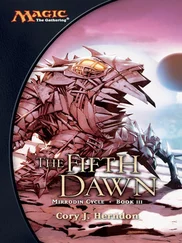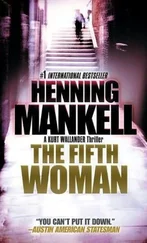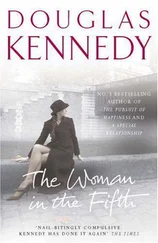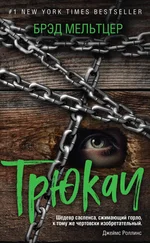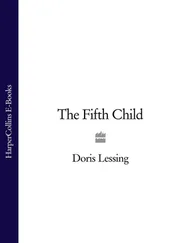62
No. That’s impossible,” I say.
“It’s not. It happened,” she shoots back.
“But how can—? The killer we’re chasing—How could he possibly be copying Nico?”
“Because that’s what Nico did .”
“I don’t understand. All those years ago, when Nico shot at the President… It was during a NASCAR race. What does John Wilkes Booth have to do with NASCAR?”
“You’re missing what I said, Beecher. When Nico took those shots at the President, that was the end of Nico’s journey. What I’m talking about is his beginning .”
Watching me digest the statement, and everything else she’s said, Clementine stands by the front door, once again taking off her jacket.
“Was this in the file Palmiotti gave you?” I ask.
“You think they’d give me something like that? No. This was from the doctor.”
“Dr. Yoo.”
“He wasn’t there when the plankholders first started—he came after the experiments began. In South Carolina. In Charleston—at the Naval Shipyard.”
“My dad wasn’t in the navy. He was army.”
“So was mine. But from what Yoo said… this wasn’t just about the navy. It was about privacy .”
I nod, well aware that throughout history, when it was time to brief the President of the United States in true privacy, they’d put him on a ship since it was the one place they could guarantee he’d be alone.
“Nico was barely eighteen,” she explains. “Yoo said that even back then, they knew Nico was having trouble adjusting to life as a soldier. That’s why Dr. Yoo was brought in. He was an addiction specialist—one of the first to realize that methadone was a good way to help soldiers fight heroin addiction. But when it came to what they were giving Nico, no one had ever seen anything like it. One week, he’d be happy and easygoing; the next week, he’d stop sleeping… stop eating… and suddenly they’d find half a dozen dead possums all around the naval base.”
“Possums?”
“No one could explain it. Until one morning at breakfast, when Nico took a spoonful of his morning cereal and calmly announced he was killing them. With his bare hands and a cinderblock. That’s when Yoo was called in.”
“So what do possums have to do with John Wilkes Booth?”
“Nothing,” Clementine says, her eyes following me as I pace. “In fact, everyone thought Yoo had it all under control and that everything was back on schedule. But what they didn’t know—and couldn’t possibly know—was that a few months later, a hunter in the South Carolina woods was shot in the back of the head at around 10 p.m. while hunting coyote. Police assumed another hunter did it by accident. Then a month after that, a second man was shot in the back of the head—caught him right behind the earlobe—while he was out on a night jog.”
“Also at around 10 p.m.?”
“No one thought twice about it, but yes, around 10 p.m. Again, because it was South Carolina, they assumed another hunting accident. But soon after that, there was a third man shot in the back of the head, point-blank, in a local movie theater. Exact time of death was 10:11 p.m.”
“The exact time John Wilkes Booth shot Abraham Lincoln.”
“Don’t you see?” she asks, starting to pick up the books that fell when she crashed into the bookcase. She knows I need the order. “Nico was practicing, Beecher. Working out the details so he could work his way toward the perfect kill.”
“And nobody put it together?” I ask, slotting an old red leather book into place. “Were all the deaths out by the shipyard?”
“No. That was the problem,” she says, gathering the last few books and a small picture frame. “They were all spread out. The first was over seventy-five miles away in Hampton County. The second was in the opposite direction. And the last one was right outside of Charleston. It got even harder when the fourth body turned up—this time in Georgia. A thirty-three-year-old dental equipment salesman was getting off his Amtrak train, and as the train pulls out of the station, he gets shot in the back…”
“Like Guiteau shooting President Garfield…”
“… and a month after that, up in one of the mountain areas of North Carolina, as the local county fair is shutting down, a drunk soybean farmer has to pee, so he darts behind one of the loading trucks… and gets shot in the belly…”
“Like Czolgosz shooting President McKinley at the World’s Fair…” I say, slotting another book into the bookcase.
“The whole thing didn’t come to a head until months later, when, back in Hampton County, some poor retired priest—”
“A priest? That’s what—”
“I know. Just listen. While the priest was working his garden, he got shot in the back of the head with something called a CE 573—a 6.5-millimeter caliber metal-jacketed bullet. Based on the way the priest’s head exploded, they think a sniper picked him off from something like two hundred and fifty feet away.”
“Or two hundred and sixty-five feet to be exact.”
She nods, cradling half a dozen books and waiting for me to finish. “No one else came close to connecting the killings—until the local sheriff started thinking that a shot like that, from two hundred and fifty feet, could only be made by someone who’s military. From there, he started making phone calls to all the local area military bases, where the young administrative assistant who picked up the phone happened to notice that the time of death was exactly 12:30 on the nose. For most people, that wouldn’t mean much. It’s a standard time. But for this assistant, who was a certifiable JFK conspiracy enthusiast, it was a clarion call. He not only knew that 12:30 was the exact time that President Kennedy was shot, but that a 6.5-millimeter caliber bullet was the exact one that traveled two hundred and sixty-five feet and was used by…”
“Lee Harvey Oswald,” I say, slotting a book onto the top shelf. It hits with a thunk .
“On a hunch, the investigative folks checked Nico’s locker. And his belongings. All were clean. Until they ran a metal detector over his mattress and found, burrowed deep inside it, a Mannlicher-Carcano bolt-action military rifle.”
Now I’m the one nodding, recognizing the rifle that Oswald used on JFK. My brain swirls, thinking about the current killer going after rectors and pastors. But that still doesn’t explain…
“Why’d they let Nico go?” I ask. “If they knew he did it, how come they didn’t tell anyone? Or arrest him?”
“Back when it was open, do you have any idea what the navy used to use the Charleston Shipyard for?”
“I assume to dock our ships?”
“Yes, of course that’s where we docked our ships. And when our ships and submarines were there, they’d also clean them, upgrade them, whatever they needed for upkeep. But according to Dr. Yoo, there was also something called the Weapons Station.”
“We have some of their files in the Archives. They upgrade the ship’s weaponry.”
“Again, yes,” Clementine says, still cradling the half dozen books that she picked up from the floor. “But even within the Weapons Station, there’s a hierarchy. Some places did regular weapons. Others did nuclear weapons. And then there was Subgroup 6.”
“Subgroup 6? That sounds like a fake name.”
“It’s real. Look it up. At one point, it was run by Admiral Thomas Coady, whose goal was to take Subgroup 6 and use it to produce the one weapon more dangerous than even a nuclear weapon.”
“Which is?”
“The ultimate weapon, Beecher: the human weapon.”
At the bookcase, Clementine dumps the stack of books on a chest-high shelf.
“You think that’s what our dads were working on?” I ask.
Читать дальше

